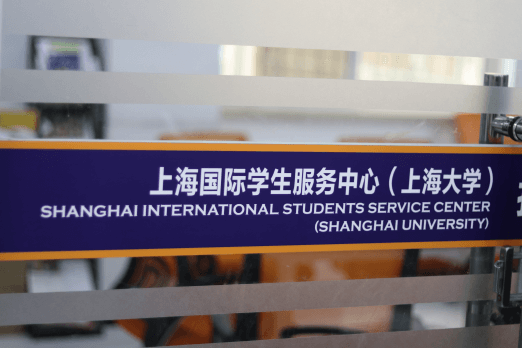The time to receive acceptance after paying the application fee generally ranges between several weeks to a few months, depending on the institution.
Table of Contents

Factors Influencing Acceptance Time
There are several factors that can influence the time it takes for an application to be processed after the application fee has been paid. Let’s delve into some of the significant factors.
Volume of Applications Received
The number of applications an institution receives can significantly influence the speed of the review process. Larger volumes can result in longer processing times.
- Influx of International Applications: Institutions that are popular among international students might receive applications from all over the world, which can require more time for verification.
- Reputation of the Institution: Prestigious institutions often receive a higher volume of applications, which can lead to a more extended review process due to competition.
- Application Deadlines: Some institutions have a rolling admission process, while others have strict deadlines. Those with set deadlines might experience a sudden surge in application volumes right before the cutoff date.
Complexity of the Review Process
The intricacy of the review process plays a pivotal role in determining how long it takes for applications to be processed.
- Criteria and Metrics: Institutions with rigorous criteria might take more time examining each application detail, such as essays, letters of recommendation, and transcripts.
- Background Checks: For some professional or specialized courses, there might be a need for in-depth background checks, further elongating the review period.
- Multiple Reviewers: Applications that need to be assessed by multiple departments or panels can result in longer wait times.
Seasonal Peaks in Application Submissions
Different times of the year can see varying volumes of application submissions based on various factors.
- Application Seasons: Most institutions have specific periods during the year when they accept applications, leading to seasonal peaks.
- Early Decision vs. Regular Decision: Early decision deadlines usually come before regular decision deadlines. Institutions might receive a bulk of applications during the early decision phase.
- External Factors: Events like educational fairs, institutional marketing campaigns, or changes in educational policies in source countries can cause sudden surges in applications.
The Application Review Process
Understanding the application review process provides clarity on what happens behind the scenes once you submit your application and pay the required fee. Here’s a breakdown of the steps most institutions follow.
Initial Screening and Verification
Upon receiving an application, institutions first ensure all required documents are present and correctly filled out.
- Application Form Checks: Institutions check if the application forms are complete, ensuring all mandatory fields are filled.
- Document Validation: They verify the authenticity of transcripts, certificates, and other documents. For instance, they might cross-check the grades with the issuing institution or board.
- Fee Payment Confirmation: They confirm the payment of the application fee and match it with the submitted application.
Evaluation of Qualifications and Documents
This phase involves a deeper dive into the applicant’s academic and extracurricular records.
- Transcript Review: Institutions study the academic transcripts to assess the applicant’s academic performance throughout their studies.
- Essay and Statement of Purpose Evaluation: Admission teams review essays or statements of purpose for coherence, relevance, and to gauge the applicant’s motivation and fit for the program.
- Letters of Recommendation: Institutions consider the feedback and endorsements provided by the referees, which often include previous educators or employers.
Interview and Additional Assessments (if applicable)
Not all programs require interviews or additional testing, but for those that do, it’s a vital component.
- Scheduling Interviews: Applicants who clear the initial rounds might receive an invitation for an interview, either in person, via phone, or through video conferencing platforms.
- Conducting Tests: Some programs might require aptitude tests, technical evaluations, or portfolio reviews, depending on the nature of the course or job.
- Group Activities: Certain institutions also conduct group discussions or activities to assess interpersonal skills and team dynamics.

Final Deliberation and Decision Making
This is the concluding phase where all the assessed data converges to a final decision.
- Panel Discussions: Application review teams often convene to discuss applicants, especially those on the borderline of acceptance or rejection.
- Comparison with Peer Applications: Institutions might also compare an application with its peers to determine the best fit for limited slots.
- Notification Drafting: Once decisions are made, institutions draft acceptance, waitlist, or rejection letters for dispatch to applicants.
Typical Timeframes by Institution/Program
Below is a table detailing the general expected timeframes for application processing across various institutions and programs:
| Institution/Program Type | Application Review Duration | Factors Affecting Duration | Comments |
|---|---|---|---|
| Universities and Higher Education Institutions | 2-6 months | Volume of applications
Complexity of program Availability of faculty for interviews |
Most universities have a set timeline for admissions, with definitive decision release dates. Early decision/early action might have a quicker turnaround. |
| Vocational and Training Schools | 2-8 weeks | Specificity of the course
Practical assessments or tests Capacity of the class |
Vocational schools often have multiple intakes a year, leading to quicker processing times. However, courses that require hands-on assessments may take longer. |
| Professional Licensing and Certification Boards | 4-12 weeks | Extensive background checks
Mandatory professional tests or exams Verification of prior experience |
These boards are stringent as they certify professionals for industries. Delays might occur if there’s a discrepancy in provided details or if retakes of tests are needed. |
Communication During the Waiting Period
Staying informed during the application review period is crucial for applicants, ensuring clarity and peace of mind. Here are the different aspects of communication to be aware of during this period.
Notifications of Application Status
Institutions typically update applicants regarding the status of their application at various stages.
- Acknowledgment Receipt: Soon after submitting the application and payment, institutions usually send an acknowledgment of receipt, confirming that they’ve received the application and it’s in the queue for review.
- Progress Updates: Some institutions offer periodic updates, informing applicants if their application has moved to the next stage or is still under consideration.
- Decision Notification: This is the final communication, wherein institutions inform applicants whether they’ve been accepted, waitlisted, or rejected.
Stay informed about the typical communication process in educational institutions via this Wikipedia link.
Inquiring about Application Delays
If there’s a considerable delay in receiving any updates, it’s appropriate for applicants to inquire about the status.
- Contacting the Admissions Office: It’s advisable to directly get in touch with the admissions office through email or phone. They often have dedicated helplines or email addresses for such inquiries.
- Being Polite and Precise: When inquiring, ensure you’re courteous and provide all relevant details like application number, date of submission, and the program applied for, to make it easier for the institution to assist you.

Potential Reasons for Longer Wait Times
There can be various reasons for delays in processing applications.
- High Volume of Applications: Some popular institutions receive a massive influx of applications, causing a backlog.
- Additional Verifications: If an institution needs to validate certain details or documents, it might take extra time.
- Institutional Delays: Sometimes, internal reasons like system upgrades or administrative changes can cause delays.
For a more in-depth understanding of institutional processes, consider visiting this Wikipedia page.
Possible Outcomes after Fee Payment
Post the waiting period, there are several potential outcomes an applicant could face.
Acceptance and Onboarding Process
When accepted, institutions provide details about the next steps.
- Welcome Packet: Accepted students often receive a package containing details about enrollment, accommodation options, orientation schedules, and more.
- Initial Deposits and Payments: Some institutions might require a commitment fee or initial tuition deposit to secure the spot.
Waiting List or Conditional Acceptance
Some applicants might neither be directly accepted nor rejected.
- Waiting List: If a program is oversubscribed, applicants might be put on a waiting list, hoping for a spot to open up if others decline.
- Conditional Offers: Some might receive an offer that’s contingent upon fulfilling certain conditions like achieving a specific grade in a pending exam.
Rejections and Appeals
Not all applications result in acceptance, but there might be avenues to contest or understand the decision.
- Feedback on Rejection: Some institutions offer feedback, explaining why an application wasn’t successful, which can be valuable for future applications.
- Appeal Process: Certain institutions have an appeal process where applicants can challenge a rejection if they believe there’s been an oversight or mistake.

